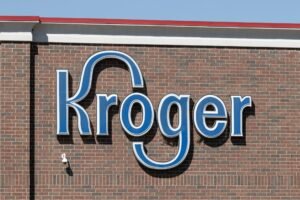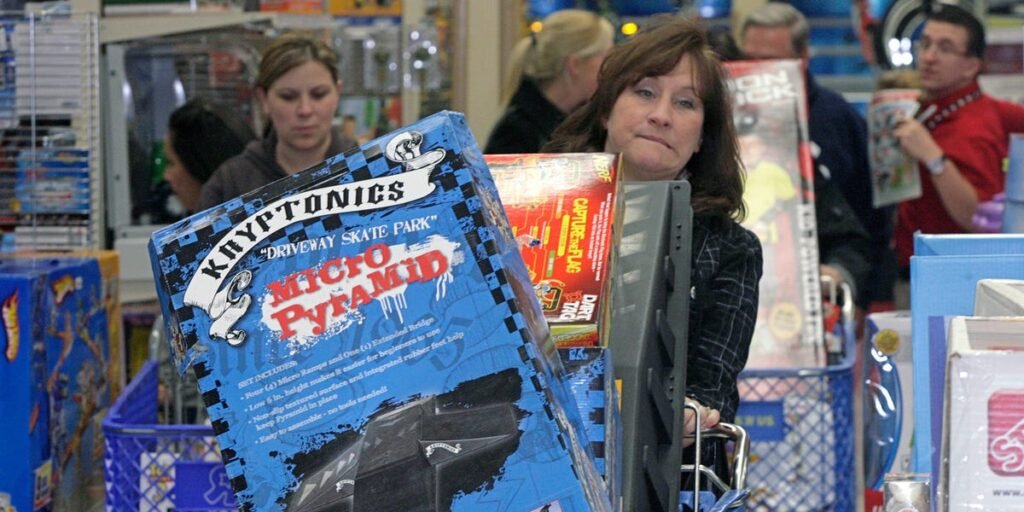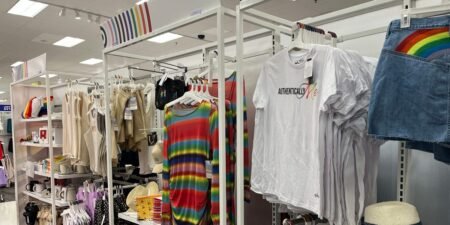Toys have been so cheap for so long that, for some parents, it can feel like their homes are exploding with dolls, action figures, games, and bins of miscellaneous plastic pieces.
But toy prices are finally rising. They logged a 2.2% increase from April to May. And a lot of that rise is tied to Donald Trump’s tariffs.
Toys were particularly vulnerable to the tariffs because about 75% of the toys sold in the US are made in China.
As a parent, I have mixed feelings about these rising prices.
Here’s what The Washington Post reports:
Although the full impact of President Donald Trump’s new import taxes has yet to show up in economic data, analysts say the toy industry — which relies on a steady flow of relatively low-priced imports — offers clues into how higher costs could soon ripple through the economy. The price of toys, games and playground equipment rose a record 2.2 percent between April and May, far outpacing the 0.1 percent inflation rate for all items that month, according to the Bureau of Labor Statistics. Economists expect those increases to pick up in the coming months, as more manufacturers and retailers are forced to pass on higher costs.
Around the time Trump announced the tariffs, and a reporter asked a question about their potential effects on prices, Trump said: “Maybe the children will have two dolls instead of 30 dolls, you know? And maybe the two dolls will cost a couple of bucks more than they would normally.”
This seemed somewhat callous — he should try telling that to a little kid on Christmas morning. But frankly, something about this stirred something deep inside me. Yes, in fact, I would prefer if my daughter had fewer dolls because her toy box is overflowing with dolls, and it stresses me out. Personally, I wouldn’t mind if there were significantly fewer toys in my home.
Toys are an interesting category in terms of inflation, and something I’m slightly obsessed with (not just because I often look at my living room and wish the toy mess of my two kids and feel despair).
I think back on my childhood in the ’80s and ’90s, and toys seemed (in my child mind) so much more expensive than they do now.
I wasn’t wrong — toys have seen significant price deflation over the last 30 years. Basically, a toy that cost your parents $20 in 1993 would only cost you around $5 today.
A little over a year ago, I wrote about how toy price deflation has had a negative effect on the tidiness of millennial parents’ homes.
So many parents of young children I know are constantly complaining of feeling overwhelmed by what seems to be the endless clutter of cheap plastic toys. Meanwhile, significant costs like day care and preschool have experienced inflation far above what the overall economy has seen.
So, am I happy that toy prices are now starting to go up? Absolutely not — I don’t want to have to pay more! And I don’t want my kids or any kids to be unable to afford to experience the joy of opening a new toy (even if it’s the 30th doll) on their birthday or a holiday.
But on the other hand, I am not the only parent who has noticed that toys seem cheaper and more plentiful than when we were kids.
And I’m not the only parent who worries that the idea that toys are cheap, easily obtained with a click of the Amazon button, and disposable is not in line with the values we want to impart on our kids.
Read the full article here

















